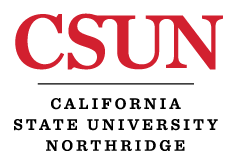Program: M.A., Art
Visual Arts
Program Description
We teach our students to experience and value visual thinking and creative problem solving in art, as well as to recognize the concurrent importance of perception, experimentation, innovation and critical thinking. Our students must understand the history and traditions of art with their relevance to social and community concerns as well as the art of different cultures. They must utilize and interact with the services, facilities and technologies offered throughout the University as well as those provided by the Art department.
The Visual Arts option has areas of concentration in Ceramics, Drawing, Illustration, Painting, Photography, Printmaking, Sculpture and Video/Digital. The concentration in Graphic Design is suspended.
Portfolio reviews for the M.A. option in Visual Arts are given in December and May each term. Students should contact the graduate coordinator in their area of concentration for specific dates.
Program Requirements
A. Entrance Requirements
- A bachelor’s degree in Art from an accredited institution or a bachelor’s degree with a minimum of 24 units of upper division Art or the equivalency as determined by the appropriate department graduate committee (those who choose the Visual Arts option must have completed a minimum of 12 upper division units in one area of concentration).
- An undergraduate GPA of 3.0 or higher (Students who have less than a 3.0 undergraduate GPA must complete the Graduate Record Examination [GRE] with a departmentally accepted score).
- Students who do not meet the undergraduate GPA of 3.0 and do not take the GRE must fulfill the following in-lieu requirements:
- Submit three letters of recommendation from former professors or other persons adjudged by the department to be competent to evaluate the student’s potential for graduate-level performance.
- Submit a written philosophical statement of intention or purpose (1 or 2 pages).
- Complete ART 611 or ART 615 with a minimum grade of “B.”
B. Requirements for Classified Graduate Status
- Students must pass the Upper Division Writing Proficiency Exam.
- Students must have their portfolio evaluated and approved by the Visual Arts Graduate Committee. If the student’s portfolio is not accepted, two additional submissions are allowed.
- Students whose undergraduate GPA was below 3.0 and do not take the GRE must have fulfilled all in-lieu requirements (see section A. Entrance Requirements, above).
C. Requirements for the Degree
- Select a graduate advisor and thesis committee.
- Complete the Program for Master of Arts form with approval of a graduate advisor.
- Meet at least once a semester with the thesis committee to demonstrate satisfactory progress toward the degree.
- Complete a minimum of 30 units of approved graduate work comprised of the following:
(Approved student programs shall include a minimum of 21 units of graduate coursework at the 500- and 600-level.)
1. Required Courses (6 units)
2. For the Visual Arts option, select courses in area of concentration.
Students must select an area of concentration from the following (12 units):
Ceramics, Drawing, Illustration, Painting, Photography, Printmaking, Sculpture or Video/Digital Art.
Graduate Level Elective Courses
ART 500 History of Art Museums and Collecting in Western Civilization (3)
ART 502 Gallery and Museum Practices (3-3)
ART 519A-Z Selected Topics in Art History (3-3-3)
ART 520 Studio Problems: Video/Digital Art (3-3-3-3)
ART 521 Studio Problems: Painting (3-3-3-3)
ART 522 Studio Problems: Illustration (3-3)
ART 524 Studio Problems: Drawing (3-3-3-3)
ART 525 Studio Problems: Printmaking (3-3-3-3)
ART 535 Studio Problems: Sculpture (3-3-3-3)
ART 540 Studio Problems: Design (3-3-3-3)
ART 544 Studio Problems: Graphic Design (3-3-3-3)
ART 550 Studio Problems: Photography (3-3-3-3)
ART 560 Studio Problems in Ceramics Design (3-3-3-3)
ART 588 Studio Problems in Public Art (3-3-3-3)
ART 620 Advanced Studio Problems: Video/Digital Art (3-3-3-3)
ART 621 Advanced Studio Problems: Painting (3-3-3-3)
ART 622 Advanced Studio Problems: Illustration (3-3)
ART 624 Advanced Studio Problems: Drawing (3-3-3-3)
ART 625 Advanced Studio Problems: Printmaking (3-3-3-3)
ART 635 Advanced Studio Problems: Sculpture (3-3-3-3)
ART 640 Advanced Studio Problems: Design (3-3-3-3)
ART 644 Advanced Studio Problems: Graphic Design (3-3-3-3)
ART 650 Advanced Studio Problems: Photography (3-3-3-3)
ART 660 Advanced Studio Problems in Ceramics Design (3-3-3-3)
ART 681A/B Seminar in Art Education (3-3)
ART 686 Research in Art Education (3-3)
ART 688 Advanced Studio Problems: Public Art (3-3-3-3)
ART 696A-C Directed Graduate Research (1-3)
ART 699A-C Independent Study (1-3)
3. Courses in Related and/or Outside Field (9 units)
These are to be selected, with the approval of the advisor, from 400-, 500- and 600-level courses in art or related fields.
4. Culminating Experience (3 units)
5. Oral examination, if deemed necessary by the appropriate departmental graduate committee.
Total Units Required for the M.A. Degree: 30
Contact
Department of Art
Chair: Edward C. Alfano
Associate Chair: Magdy Rizk
Art and Design Center (ADC) 120
(818) 677-2242
Graduate Coordinator: Lesley Krane
(818) 677-3032
Student Learning Outcomes
- Basic Skills: Master advanced knowledge, theories and concepts about art; communicate ideas and concepts through writing, speaking and art making.
- Art Knowledge: Broaden the knowledge of contemporary art and the understanding of the theoretical, cultural and historical contexts of art through writing, speaking and art making on advanced levels.
- Critical Thinking: Master processes of generating and solving problems in art; analyze, interpret and question traditional methodologies and preconceived notions of art and art making on an advanced level.
- Interdisciplinary Connections: Explore and engage in interdisciplinary forms of art making.
- Global Perspectives: Develop an appreciation and tolerance of diverse perspectives dealing with art, culture, teaching and learning.
- Collaboration: Engage in both individual and collaborative art experiences among students, faculty and community.
- Professional Preparation: Master an understanding of what it means to be a professional artist; develop an advanced understanding of the demands and expectations of the art profession and art field.




